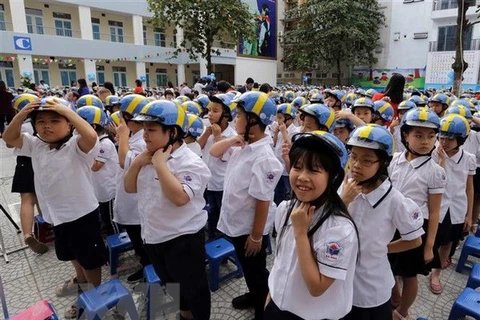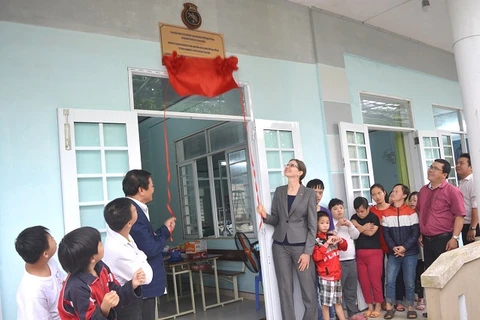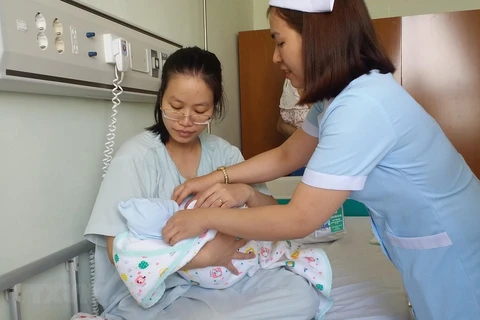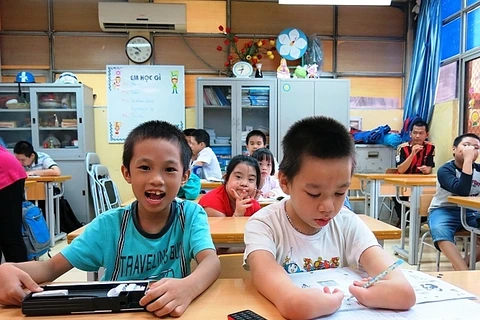 Children who account for 28 percent of Vietnam’s population are among the groups vulnerable to disasters and climate change incidents (Photo: VNA)
Children who account for 28 percent of Vietnam’s population are among the groups vulnerable to disasters and climate change incidents (Photo: VNA) Hanoi (VNA) – The findings of a study on social protection systems in response to potential environmental risks and traumatic incidents for children and their families were revealed during a seminar in Hanoi on March 13.
The event was jointly held by the Ministry of Labour, Social Affairs and Invalids and the UNICEF.
The research on the building of a social protection system capable of responding to traumatic incidents in Vietnam was carried out in two disaster-prone districts of Thuan Bac and Bac Ai in the south-central province of Ninh Thuan in November 2018.
According to the research, periods of drought have caused poor health for children due to hot weather, dust and pollution, resulting in digestive diseases, especially for children under the age of five.
Meanwhile, families relocating to other places can also disrupt children’s studies, along with other risks such as change of environment and unstable living conditions.
Participants at the event said that Vietnam faces various challenges, including a degrading environment and prolonged child poverty. As Vietnam is among those nations hardest hit by climate change, the frequency of natural disasters and climate change-related weather incidents are likely to badly affect the country’s development potential.
Frequent disasters and climate change incidents have caused severe impact to vulnerable groups, including children who account for 28 percent of Vietnam’s population.
Participants also discussed limitations to the country’s current social protection system in response to natural disasters and the role of competent agencies in the development of the system for children and their families, as well as determined prioritised steps to extend the system.
They agreed that it is necessary to enhance financial sources, raise public awareness about child care and protection, and bolster training for parents and children in disaster response and prevention.
In addition, authorised agencies need to diversify types of aid relief after disasters to meet people’s demands, particularly for children in mountainous regions, and to review procedures to deliver aid in a timely manner. –VNA
VNA
























